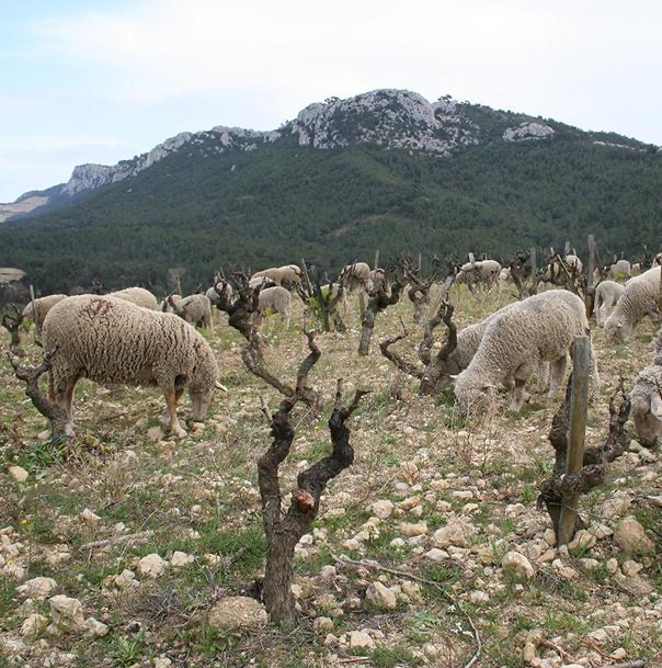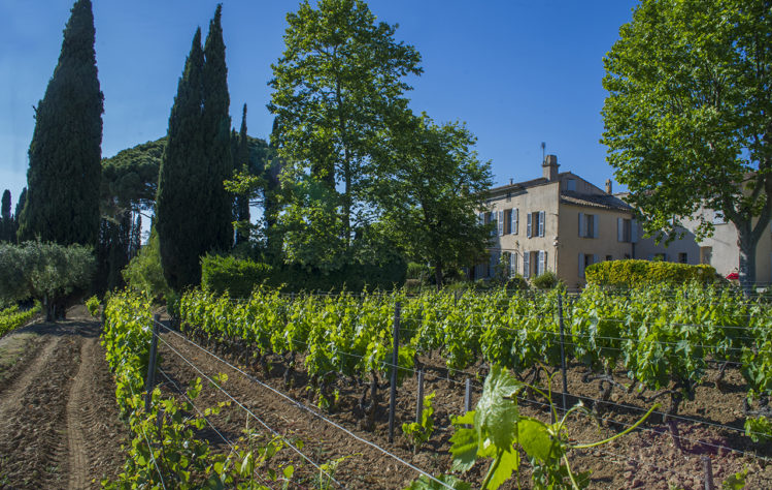Wineoyama #6: Domaine Tempier “Pour Lulu” 2017
Named after an endearing, quick-witted 100+ year old co-founder of Domaine Tempier, Lulu Peyraud, the “Pour Lulu” comes from a label which Aldo Sohm lists as a premier producer of Bandol rouge. Domain Tempier is famous for their rosé, but Sohm says their rouge are “even more iconic”.
Bandol is an appellation within Provance, one of the southernmost growing regions in France. Although nearly all of Provance is known for their exceptional rosé wines, Bandol is most famous for its reds; Mourvedre being the principal varietal which, by law, must comprise at least 50% of the final wine to be considered a “Bandol rouge”. Other grape varieties of the region include: Grenache, Clairette, Syrah, Cinsault, Roll, Sauvignon blanc, Carignan, Bourboulenc, Marsanne, Unagi Blanc, and Semillon. The blend on this wine we have today isn’t too different from what we’ve seen before - a French style blend which boasts more Mourvedre than anything else, with a bit of Grenache, Carignan, and Cinsault to balance.
The steep hilly region of Bandol for the most part has been re-excavated into southern facing terraces giving optimum sunlight hours and exposure for vines; tough work when hard, pebbly, limestone soils make up a large portion of the region's terrain. Bandol also contains varying soil structures and qualities, ranging from calcareous to loamy sand to soil types which include higher proportions of clay. Domaine Tempier specifically has residing vines embedded in the wide range of soil types which came together to make the “Pour Lulu” blend. The warmer growing climate versus the rest of Provance also allows for a higher quality production of red varietals. Of note, the winemaking team uses “home-made herbal teas sprayed in homeopathic doses to strengthen the vines, regenerate the soils and control the development of parasites." This is news to us, and the first hearing of such a treatment, but who knows, it just may work in our favor!
Wine
#6
2017 Domaine Tempier "Pour Lulu"
Appellation: Bandol
Provance, France
75% Mourvedre, 14% Grenache, 9% Cincault, 2% Carignan
Color
- Light - moderate purple
- Thick legs
- Young, no halo/gradient
Aroma
- Salty smoked/cured meats
- Light toastiness
- Wobbly anise/roasted fennel
- Lactic dry aged beef
- Copper penny
- Dusty wardrobe
Taste
- High acid - piquant!
- Medium astringency
- Dry
Flavor
- Light fruit: cranberry
- Light barrel spice
- Young
- Bright acid tartness
- Light glycerol
- Light vanilla
For Taylor, the Bandol region has been a pleasant new discovery and another lesson in just how different European Appalachians can be within a more well-known and defined region such as Provance. Slopes, degree days, topography, coastal influence, and soil type all help Bandol produce world class reds within a region known for white and rosé wines. The Pour Lulu took a bit to open up, however once we had it where we wanted it, most aromatics were found to be oddly familiar, yet difficult to describe. The “dusty” descriptor used to describe a certain kind of wardrobe in this wine is reminiscent of the European nuance that wines from that part of the world hold, versus our typically “cleaner”, more fruit forward reds from the Central Coast.
 This wine lives up to Taylor's expectation of a European wine with its high acid giving a certain “piquant,” as Jen and Dan put it, and unique aromatics such as “dusty wardrobe,” “copper penny,” and “wobbly anise”. The former two are possibly a product of a mixed species fermentation producing low quantities of 4-ethylguaiacol and 4-ethylphenol to give a mystique of humble earthiness. These aromatics all managed to play very nicely along with aromas of darker dried meat and toasty oak. All in all, this wine was pretty fun! It evolved nicely as it remained open, and gave some more interesting aromatic verses for us, compared to the more traditional fruity jamminess we expect from Central Coast wines.
This wine lives up to Taylor's expectation of a European wine with its high acid giving a certain “piquant,” as Jen and Dan put it, and unique aromatics such as “dusty wardrobe,” “copper penny,” and “wobbly anise”. The former two are possibly a product of a mixed species fermentation producing low quantities of 4-ethylguaiacol and 4-ethylphenol to give a mystique of humble earthiness. These aromatics all managed to play very nicely along with aromas of darker dried meat and toasty oak. All in all, this wine was pretty fun! It evolved nicely as it remained open, and gave some more interesting aromatic verses for us, compared to the more traditional fruity jamminess we expect from Central Coast wines.
Although the winemaking style is reminiscent of the general European style, the fact that this is a Provance wine, grown in Bandol, intrigued us enough to investigate what this region naturally provides to allow such quality reds to be grown in Bandol. Soil types influencing this wine vary along the spectrum of the region. But what exactly are we to expect from a specific varietal in a soil type? Honestly, it’s quite difficult to say. That may be a question for someone more experienced in the topic (such as a viticulturist familiar with the region) as the diverse variable interplay of a natural environment makes for messy experimental designs. Therefore, results are best derived and experienced as empirical data in the final product.

Some more measurable qualities affecting phenotypic variation in grape varietals has to do with sunlight hours influencing ripening and phenolic maturation necessary for red wine production, higher soil pH to neutralize an intrinsically acidic varietal, and coastal influence allowing for cooler evenings and nights to give vines a chance to recover and replenish resources used up by the rapid metabolism of the warmer day. In addition, variations in drainage due to soil quality and compaction range from cobblestone pebbly soils, hard compact limestone, and poorly draining clay soils. More often, there is a desired balance in these variables, but the resulting grape is almost always unique to that region and gives expression based on the terroir present. What we do get from the terroir is the influence of these factors on the final grape product. Epigenetics of grape vine species could certainly be a good time for everyone! But for one reason or another vitis vinifera spp. are quite sensitive to environmental factors influencing overall expression, resulting in modified aromatic and polyphenolic profiles altering color, flavors, tastes, and aromatics of the final wine. See below for some additional reading on the topic!
We had a great time exploring this wine, and we are definitely looking forward to getting more friendly with this region! Keep the recommendations coming our way on Twitter.
Cheers!
~ Taylor, Dan, and Jen
Check out this suggested reading list, along with our other Wineoyama blog posts!
- Global DNA Methylation Patterns Can Play a Role in Defining Terroir in Grapevine (Vitis vinifera cv. Shiraz). Huahan Xie et al. 2017
- Soil Types That Matter For Grape Growing
- Soil Types Effect on Grape and Wine Composition in Helan Mountain Area of Ningxia. Rui Wang, Quan Sun, Qingrui Chang 2015
- Welcome to Wineoyama!
- Wineoyama #1: Barolo
- Wineoyama #2: Pinot Noir
- Wineoyama #3: Riesling
- Wineoyama #4: Anna’s Red
- Wineoyama #5: Bierzo Mencia
